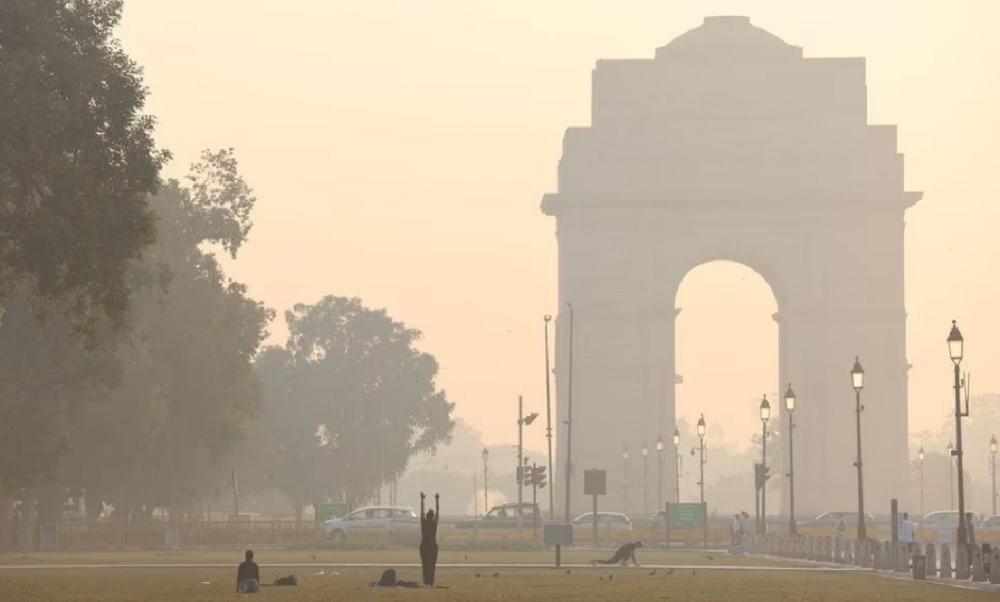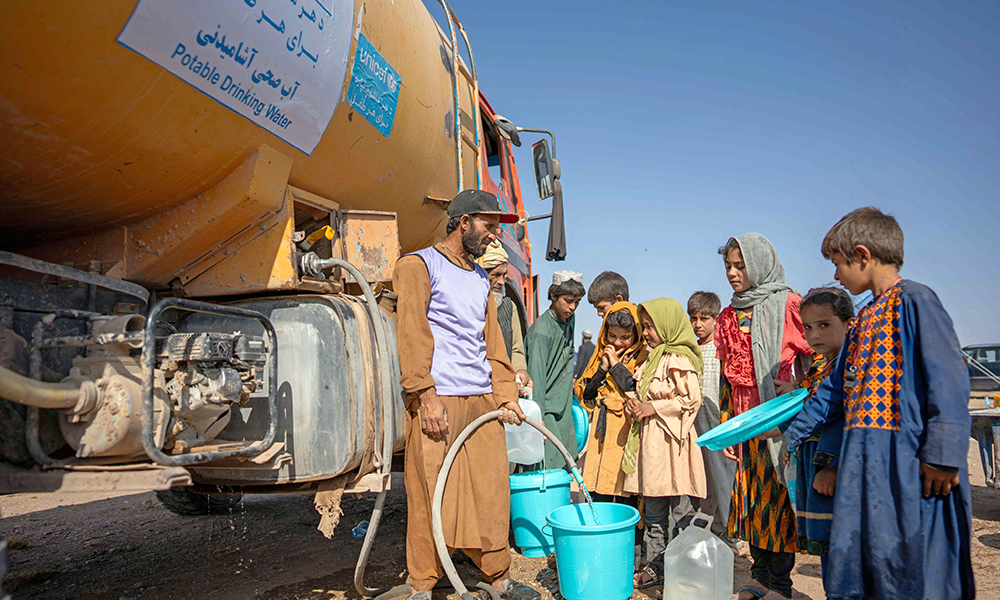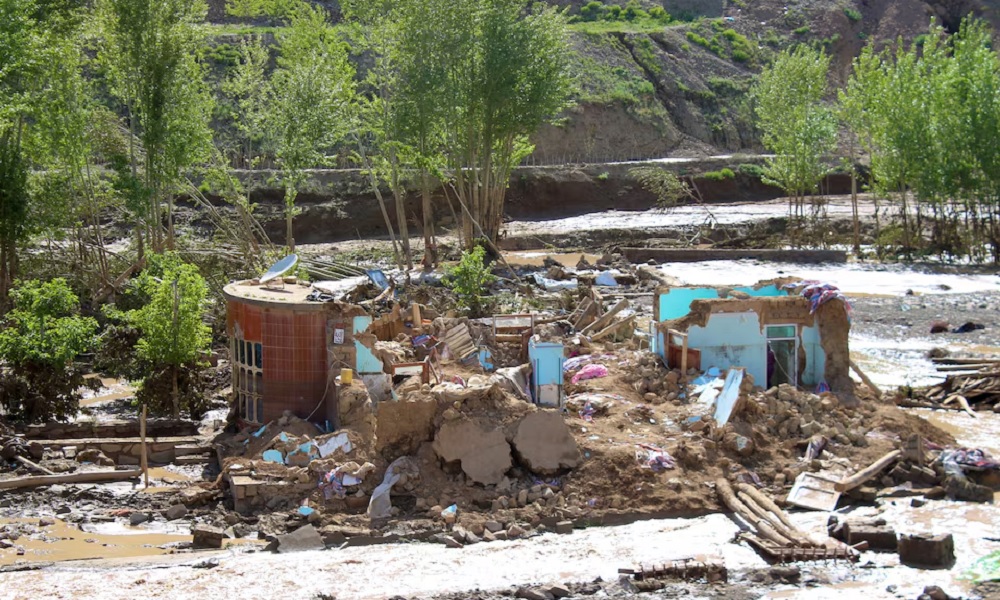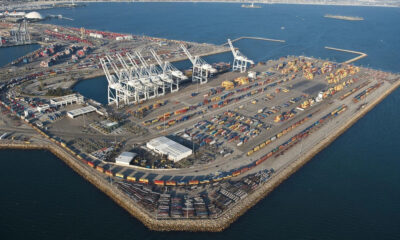Climate Change
India’s New Delhi blanketed by toxic haze, world’s most polluted city again

India’s capital New Delhi was wrapped in a thick layer of toxic haze on Friday and some schools were ordered closed as the air quality index (AQI) plummeted to the “severe” category.
New Delhi again topped a real-time list of the world’s most polluted cities compiled by Swiss group IQAir, which put the Indian capital’s AQI at 640 in the “hazardous” category on Friday, followed by 335 in the Pakistani city of Lahore, Reuters reported.
Regional officials said a seasonal combination of lower temperatures, a lack of wind and crop stubble burning in neighbouring farm states had caused a spike in air pollutants.
Many of New Delhi’s 20 million residents complained of irritation in the eyes and itchy throats with the air turning a dense grey as the AQI hovered around 480 in some monitoring stations.
An AQI of 0-50 is considered good while anything between 400-500 affects healthy people and is a danger to those with existing diseases.
“In my last 24 hours duty, I saw babies coughing, children coming with distress and rapid breathing,” Aheed Khan, a Delhi-based doctor, said on social media platform X.
There were fewer people in the city’s parks such as Lodhi Garden and India Gate, popular with joggers.
Residents snapped up air purifiers. One service centre for the appliances said there was a shortage of new filters and fresh stocks were expected on Monday.
In India, the annual average concentration of particulate matter 2.5 (PM2.5) in the air is the highest in northern regions.
Officials said they saw no immediate improvement in the air quality.
“This pollution level is here to stay for the next two to three weeks, aggravated by incidents of stubble burning, slow wind speed and cooling temperatures,” said Ashwani Kumar, chairman of the Delhi Pollution Control Committee.
Farmers in the northern states of Punjab, Haryana and Uttar Pradesh typically burn crop waste after harvesting in October to clear their fields before sowing winter crops a few weeks later.
This year, attention on the worsening air quality has cast a shadow over the cricket World Cup hosted by India, with financial capital Mumbai also suffering from a spike in pollution levels.
Delhi hosts a World Cup match on Monday between Bangladesh and Sri Lanka.
A concentration of toxic PM2.5 particles, which are less than 2.5 microns in diameter and can cause deadly illness, was 53.4 times the World Health Organization’s annual air quality guideline value in New Delhi on Friday, according to IQAir.
While junior schools in the capital were ordered shut for Friday and Saturday, they were open in the suburbs and children boarding school buses were forced to wear masks that had been put away since the end of the COVID-19 pandemic.
Poor air quality also caused respiratory problems, irritation in the eyes and restlessness in pet animals.
“Breathing trouble can develop into pneumonia or other ailments in younger animals. If possible, avoid taking pets out on morning walks for a few days till the air improves,” said Prabhat Gangwar, a veterinarian at animal welfare NGO Friendicoes.
Climate Change
UN and ICRC warn of serious water shortage in Afghanistan
The International Committee of the Red Cross in Afghanistan reported that an estimated 33 million people in the country face severe water shortage

The United Nations Human Settlements Programme (UN Habitat) warned this week that 21 million people in Afghanistan are currently facing a serious water crisis and that the country needs major investments in water infrastructure.
Stephanie Loose, the head of the programme, said in a report that major Afghan cities such as Kabul, Kandahar and Herat are also facing a serious shortage of clean drinking water and that groundwater resources in these cities are decreasing significantly.
However, last week, the International Committee of the Red Cross (ICRC) in Afghanistan reported that an estimated 33 million people in the country face severe water shortage.
Marking World Water Day on March 22, the ICRC quoted a Kabul resident Shafiqullah Hamkar of District 5 in Kabul city as saying: “Our borewells have completely dried up because of the minimal snowfall and rainfall over the last few years.
“The sharp decline in groundwater levels has left us no choice but to rely on commercial water tankers for our most basic needs. It is a big challenge for us in the city,” he said.
ICRC said Hamkar represents an estimated 80% of Afghans who are dealing with the severe impact of erratic rainfall patterns, rising temperatures and droughts.
The situation is even worse in rural areas where people often rely on untreated surface water, which leads to the spread of waterborne diseases such as cholera and diarrhea.
“For millions of Afghans, who are already struggling with many challenges and facing a dire humanitarian situation, vital activities such as getting water to drink or cook and providing irrigation for crops are often impossible. This has a devastating impact on people’s health and access to food, and hampers the country’s potential for economic development,” says Martin De Boer, the head of programs for the International Committee of the Red Cross (ICRC) in Afghanistan.
He added that the lack of required infrastructure – including water-supply systems, dams and irrigation networks – further exacerbates the challenges. Responding to the needs of the people, the ICRC plays an important role in supporting communities and assisting authorities to improve and manage water supplies.
Climate Change
Over 500,000 Afghans displaced due to climate disasters in 2024: IOM

More than half a million people in Afghanistan were displaced due to climate disasters in 2024, the International Organization for Migration said in a country report published on Tuesday.
“Nearly 9 million individuals were impacted by climate hazards in the last 12 months, with over 500,000 displaced by floods, drought, and other disasters,” IOM said, AFP reported.
“Roughly three in five of those displaced relocated elsewhere within their province of origin”, with the western Herat and Farah provinces among the hardest hit, it said.
This week, 39 people were killed due to floods, hail and storms in southwestern Afghanistan, mainly in Farah, according to local authorities.
Afghanistan is among the poorest countries in the world after decades of war and is ranked the sixth most vulnerable to climate change, which is spurring extreme weather.
Drought, floods, land degradation and declining agricultural productivity are key threats, according to the United Nations.
Flash floods last May killed hundreds and swamped swaths of agricultural land in Afghanistan, where 80 percent of people depend on farming to survive.
“Over 11 million people in Afghanistan are at high risk of severe impacts from climate-induced disasters in the future,” the IOM said.
The UN agency estimates that “climate-sensitive livelihoods, like subsistence farming, make up 73 percent of jobs in Afghanistan”.
It added that “92 percent of villages have limited access to emergency services” and “96 percent lack resources for crucial measures like early warning systems and search and rescue.”
Climate Change
Floods in Farah and Kandahar claim the lives of 29 people

Officials from the disaster management departments of Farah and Kandahar report that floods in these two provinces have resulted in 29 fatalities and nine injuries.
Mohammad Israel Sayar, the head of disaster management in Farah, confirmed to Ariana News that 21 people lost their lives and six others were injured due to floods on Tuesday in the Qala-e-Kah district of the province.
According to Sayar, the victims had gone to the mountains of Qala-e-Kah for recreation purposes when floodwaters suddenly swept them away.
Officials from the disaster management department in Kandahar also stated that floods in the province have caused 11 deaths and injuries.
They reported that in the seventh district of the province, one woman and three children died when the roof of a house collapsed.
They added that in the fifth security district of the province, three women and one child lost their lives due to the floods. Two children and one man were also injured.
-

 World5 days ago
World5 days agoSecretive Chinese network tries to lure fired US federal workers, research shows
-

 Latest News4 days ago
Latest News4 days agoAfghanistan has the right to access Amu River’s water: Uzbek minister
-

 Climate Change5 days ago
Climate Change5 days agoUN and ICRC warn of serious water shortage in Afghanistan
-

 Latest News4 days ago
Latest News4 days agoAmnesty international urges Pakistan to halt Afghan deportations
-

 International Sports5 days ago
International Sports5 days agoIPL 2025: Punjab Kings secure thrilling 11-run win over Gujurat Titans
-

 Latest News4 days ago
Latest News4 days agoUN ‘deeply disappointed’ over ongoing ban on girls’ secondary education
-

 Latest News4 days ago
Latest News4 days agoAfghanistan-Iran-Europe railway corridor activated
-

 Business3 days ago
Business3 days agoAfghanistan ships first consignment to Europe via Khaf-Herat railway
























